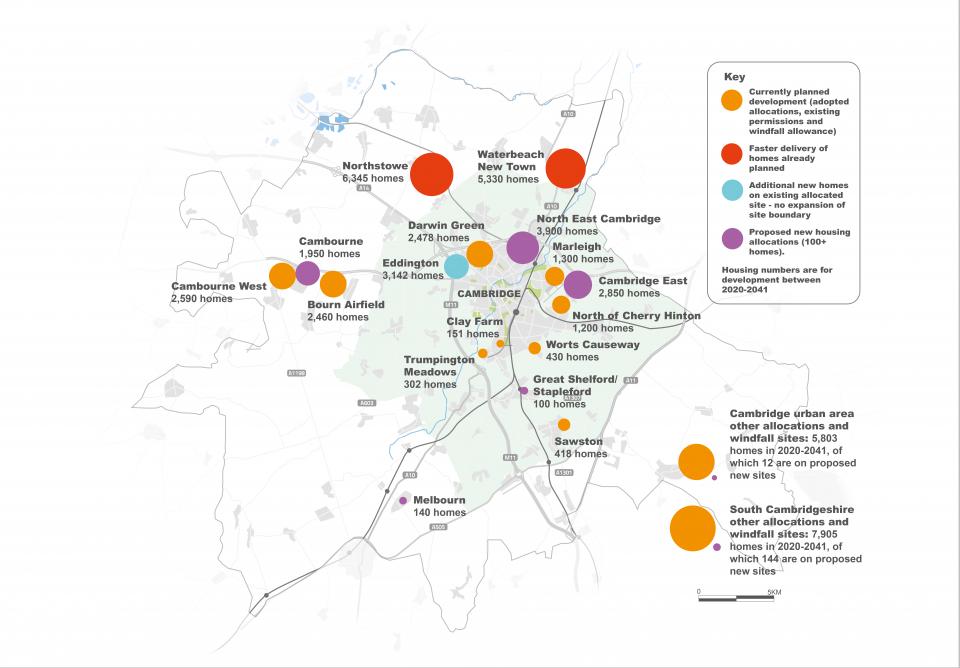
has a strong and nationally important economy. Over recent years, jobs have been created faster than new homes have been built, and this has contributed to higher house prices and increased commuting into the area. Our new development strategy aims to meet our increased need for new homes in a way that minimises our environmental impacts and improves the wellbeing of our communities.
We anticipate than an average of 1,771 homes per year will be built in our area during the Plan period. Our evidence shows that we need to plan for about 550 more homes per year in order to meet our need for housing. Our strategy proposes 19 additional sites for development, along with sites already in our adopted 2018 Local Plans, in order to meet this housing need. Alongside this we will plan for the business space, supporting community facilities, green spaces and infrastructure to meet the needs of our growing communities.
We propose to direct development to where it has the least climate impact, where active and public transport is the natural choice, where green infrastructure can be delivered alongside new development, and where jobs, services and facilities can be located near to where people live.
Our vision is for the well known characteristics of the historic core of Cambridge to be complemented by active, compact neighbourhoods – new and old. This means providing opportunities to regenerate areas that aren’t yet reaching their potential, and creating new city neighbourhoods which have the critical mass of homes, jobs and services to create thriving communities, making best use of brownfield and safeguarded land.
Alongside this, we want our new towns to mature into great places to live and work, making the most of their existing and planned public transport links to Cambridge and other centres. In the case of Cambourne, East-West Rail means that it will be one of the best-connected places in our region, and whilst things like the location of the new station are yet to be resolved, we do think it can develop into a more substantial town with a more fully developed and lively centre.
We want our rural villages to continue to thrive and sustain their local services, but we don’t want to encourage lots of new homes in places where car travel is the easiest or only way to get around. We therefore propose some development in and around larger villages that have good transport links and services, and to support important employment clusters. In smaller villages, we’ll continue to support infill development and affordable housing on suitable sites, but we do not propose lots of village growth.
Topic paper
Further information on the policy areas, including their national, regional and local context, and further information on the evidence that has informed the proposed policy direction, can be found in the topic paper which accompanies this theme:
Tell us what you think
Our consultation for this phase is now closed.